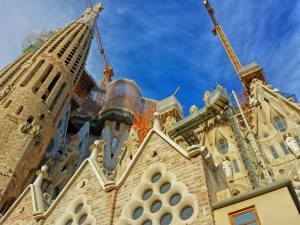By Bart Barry–

Editor’s note: For part 3, please click here.
*
Another week comes to pass in the decisive erosion of public interest in our sport. Those curious about The Fight to Save Boxing do not migrate elsewhere within – they do not, anymore, find a minimumweight master or junior middleweight from a few towns over and redirect their gazes; they migrate away. Intention in these matters cannot be read easily as action, so there’s this to impart, once more: If manager Al Haymon detested boxing and wished to see it abolished from the public consciousness before the year 2025, would he alter a single act he has taken in the last three years?
Nearly every active fighter worth watching between 140 and 160 pounds, right now, awaits a resolution of some sort on The Fight to Save Boxing – even Mexican Saul “Canelo” Alvarez, who has the youthful defiance and fanbase to do as he wishes, and a promoter with little left to lose, doesn’t dare schedule his next match on a weekend commemorating his people’s successful default on their loan from the French, lest an African American and Filipino prefer Mexicans’ pay-per-view buys for themselves.
Mayweather and Haymon and promoter Bob Arum are empowered by our collective imaginations and very little more. Whatever monetary estimates Haymon or Arum feed the media – giving reporters two or three numbers, and letting those aces decide whether to separate them with ‘+’ or ‘x’ or assign them as exponents – not a penny of that money will make its way to you, so stop caring about it. Without the obfuscating factor of gross sales, which, regardless of what today’s economists tell you, are not the same as gross items produced, the match that now issues ransom notes to an entire industry comprises a past-his-prime welterweight who needed two fights last year to defeat Marcos Maidana conclusively and a past-his-prime welterweight reduced in his last match to fighting a Stony Brook nutritionist in China.
Alvarez and De La Hoya, in other words, should announce Alvarez vs. Austin’s James Kirkland at Alamodome on May 2, already, open the bidding to whichever television network wishes to cover it, knowing Mexican television will do so happily, and give Haymon and Arum and HBO and Showtime an option: Watch their superfight’s revenues subverted by the exodus of boxing’s last reliable fanbase, Mexican – or did you think a man unoriginal as Mayweather covets Cinco de Mayo and El 16 de Septiembre because his schedule as Showtime executive producer is otherwise full? – or pay De La Hoya and Alvarez and Kirkland a large sum of step-aside money. A large sum of very poor previous choices now limits De La Hoya’s mobility, sure, but he works for Alvarez, needing Canelo far far more than Canelo needs him, and however much his foundering company now needs to be peaceful with Arum and Haymon, if De La Hoya loses Canelo, he becomes a regional promoter with a magazine.
Canelo’s chutzpah and self-assurance are not justified by anything he does in the ring, no, but who cares? Mexicans know he’s the best they can do right now, and so does he, and he’s right, and so are they, to be enkindled by an American and a Filipino taking hostage a calendar entry fully meaningless but for what significance Mexicans assign it.
Goodness, this column has veered too deeply into meaninglessness. Woody Allen’s “Vicky Cristina Barcelona”, frankly, is the righteous subject of today’s spire, because it is tangible and excellent, not ephemeral and unneeded, and because it stars Spanish actor Javier Bardem, about whom I’ve written enthusiastically before. Back then, though, I was more confined by convention than I am now; we were only one year into negotiations for Mayweather-Pacquiao, and there was still interest enough in boxing for talented young writers to believe covering our sport might some day provide a sustainably supplemental sort of income, even if the days of making a living from it were expired, and so the sentences were shorter and crisper and often isolated in paragraphs of their own.
That can still be done.
The point of this series, though, is to obey no conventions whatever, a betrayal of the conventional wisdom that betrayed a generation of young sportswriters, and so we return to Javier Bardem and his wonderful portrayal of Juan Antonio, a Catalan painter desperately and violently enamored of Maria Elena, a desperately and violently enchanting Catalan painter played expertly by Spanish actress Penelope Cruz – expertly enough to win an Oscar. So rich is the movie that neither the name of Bardem’s character nor Cruz’s appears in its title – as those names belong to a grounded American tourist, Vicky, played by British actress Rebecca Hall, and seduced first by Juan Antonio, and Cristina, a flighty American tourist played by American actress Scarlett Johansson, and seduced second by Juan Antonio and then Maria Elena. The story’s arc is gentle, its narration relying on the word balmy, its writing excellent, and its acting superb; whatever wealth of ill will some Americans now bring to Woody Allen’s work, it is hard for anyone to watch “Vicky Cristina Barcelona” and not enjoy it.
The title, and its reference to the movie’s third and most important character, is revelatory. Like the city it portrays in beautiful and soft colors, the movie’s title is nonsensical, and the city of Barcelona, cooler than any city more famous, follows no conventions, either, because of its inspiration, Antoni Gaudi.
Perquè el Barcelona és la ciutat de Gaudí . . .
*
Editor’s note: For part 5, please click here.
*
Bart Barry can be reached via Twitter @bartbarry











